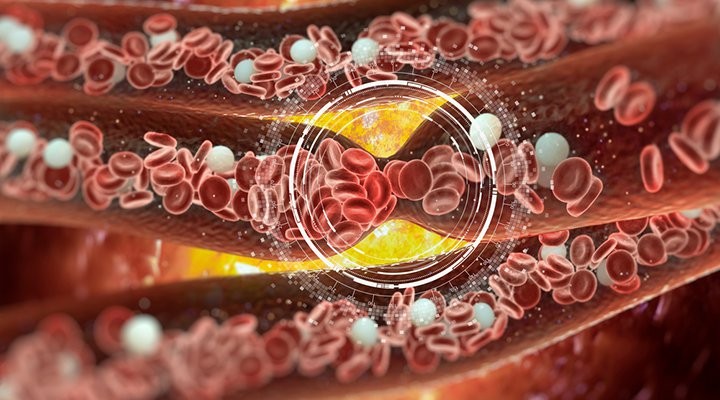No products
What Leads Blood Clumps And What They Feel Like!
A few coagulations additionally frame inside the vein with no reason and can't break down normally. Most normally, such blood clumps require prompt restorative consideration especially on the off chance that they are in basic regions like the cerebrum, legs, lungs, or heart. Things being what they are, what causes blood clusters and what does a blood coagulation feel like? We should discover!
What causes blood clumps?
Various components result in the development of blood clumps.
A blood coagulation begins to shape when the blood moving through your body reaches certain substances either in the dividers of the blood vessel or your skin. At the point when them two reach, it means that either the divider or the skin is broken.
Waxy cholesterol plaques in the corridors likewise contain these substances. Thus, for the situation where the plaque tears open, the coagulating procedure will begin. Numerous strokes and heart assaults happen in light of the sudden burst of a plaque in the mind or heart.
Another factor that causes blood clusters to shape is the ill-advised stream of blood. In the event that the blood begins to accumulate in your heart or the blood vessels, at that point the platelets can stick together, framing a coagulation. For instance, in profound vein thrombosis (DVT) and atrial fibrillation, blood moves gradually, hence expanding the shot of blood clumps.
Blood clumps can likewise result in view of outer damage, or they can likewise happen inside the blood vessels without conspicuous damage. At the point when damage happens, the platelets and plasma proteins thicken to shape a semisolid mass. At that point, the blood coagulation goes to other body parts and causes hurt.
Blood clumps can likewise frame for the accompanying reasons:
• A family history of blood clumps
• Heart disappointment
• Obesity
• Arteriosclerosis
• Factor V Leiden
• DVT
• Antiphospholipid disorder
• A couple of prescriptions like hormone treatment medications and oral contraceptives
• Heart assault
• Pregnancy
• Smoking
• Heart arrhythmias
• Peripheral corridor sickness
• Prolonged sitting
• Stroke
What causes blood clusters in supply routes, veins, and the heart?
As specified before, a blood coagulation can shape when the coating of a blood vessel is harmed (regardless of whether it is a vein or a supply route). The harm may be undetectable, or it very well may be found as a slash or cut. In addition, they can likewise happen when blood winds up stale.
In veins, normally, blood clusters shape when the individual's muscles neglect to contract with the end goal to drive the blood back toward the heart. Accordingly, the blood winds up dormant and begins to frame little blood clumps along the vein's dividers. Slowly, the coagulation can develop to hinder the vein and keep the blood from totally coming back to the heart.
In the interim, in a conduit, the procedure is altogether extraordinary and by and large happens in light of a condition called atherosclerotic sickness. The plaque is saved along the conduit's coating and keeps on developing, making the corridor turn out to be to a great degree thin. At that point, when the plaque bursts, blood clumps shape and somewhat or totally stop the blood stream.
In the heart, coagulations for the most part frame in the ventricle because of a heart assault in which heart muscles are harmed and can't typically contract. In this way, when the harmed region doesn't contract when whatever is left of the heart muscles do, blood can stagnate and cause clump development.
What does a blood coagulation feel like?
In various parts of the body, a blood coagulation will feel in an unexpected way. The following is insight about what completes a blood coagulation feel like in various body parts including the leg, cerebrum, stomach area, and chest.
In the leg
Blood clusters in the veins are called DVT, and keeping in mind that a coagulation in the legs isn't excessively hurtful, the coagulation can loosen up and stall out in the lungs, prompting lethal conditions, for example, aspiratory embolism. The signs you will see incorporate delicacy, redness, swelling, and agony.
The torment will be like the torment of a muscle issue. In any case, if there should arise an occurrence of a blood coagulation, hoisting your leg or icing it won't tone down the swelling. Besides, your leg may feel warm, and you may see a somewhat blue or ruddy tone to your skin.
In the cerebrum
Blood clusters in the carotid corridors of the neck or the councils of the heart can move towards the mind and cause a stroke. The signs you may see incorporate deadness or shortcoming on one side of the body, trouble in talking or thinking obviously, unsettling influences in vision, and trouble in strolling. In a stroke, you probably won't feel any agony; in any case, there may be a cerebral pain.
In the midriff
A blood coagulation in the real veins of the digestive tract channels blood. It can likewise stop the dissemination of blood to the digestive system and prompt inner harm. The manifestations incorporate heaving, stomach torment, and sailing. On the off chance that the agony compounds with time or after you eat something, it could be an indication of a blood coagulation.
In the chest
A blood coagulation in the courses can cause a heart assault. It can likewise make a trip to the lungs and cause pneumonic embolism. The side effects incorporate chest torment that exacerbates with each breath. The agony might be went with a hack, fast pulse, and shortness of breath.
In the interim, serious agony in the focal point of your chest may be an indication of angina or heart assault. The torment may likewise transmit to your arm, shoulder, and left half of the jaw.
Medications for blood clusters.
Eliquis (Apixaban)
VIEW ELIQUIS
Pradaxa (Dabigatran)


Leave a comment